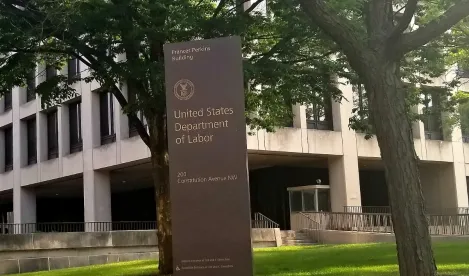In April, we posted about the U.S. Department of Labor’s (DOL) Employee Benefits Security Administration (EBSA) issuing cybersecurity guidance for employee retirement plans. That is, April 14, 2021. Shortly thereafter, the DOL updated its audit inquiries to include probing questions for plan fiduciaries about their compliance with “hot off the press” agency guidelines.
So, what do those inquiries look like?
In short, the DOL is asking plan sponsors to produce:
all documents relating to any cybersecurity or information security programs that apply to the data of the Plan, whether those programs are applied by the sponsor of the Plan or by any service provider of the Plan
For plan fiduciaries that are new to cybersecurity and have not received a DOL audit in the last few months, it may not be clear what documents or materials the DOL is expecting. The DOL fleshes out its general inquiry with a laundry list of items. Here are some examples of those more specific requests:
-
All policies, procedures, or guidelines relating to such things as:
-
The implementation of access controls and identity management, including any use of multi-factor authentication
-
The processes for business continuity, disaster recovery, and incident response.
-
Management of vendors and third party service providers, including notification protocols for cybersecurity events and the use of data for any purpose other than the direct performance of their duties.
-
Cybersecurity awareness training.
-
Encryption to protect all sensitive information transmitted, stored, or in transit.
-
The list above is not complete, but it makes clear the DOL is looking for information about what plan fiduciaries are doing to safeguard their own information and systems to address privacy and security, not just that of their service providers. Some plan fiduciaries might be wondering what should policies, procedures, or guidelines look like to protect plan data. There are many frameworks to consider when adopting reasonable safeguards. Examples include guidance published by the National Institute of Standards and Technology, the New York SHIELD Act, the Massachusetts data security regulations, the privacy and security standards under HIPAA, etc.
In addition to policies, procedures, and guidelines summarized above, the DOL also seeks in its audit request copies of other materials, some of which are listed below.
- “All documents and communications relating to any past cybersecurity incidents.”
So, evidently, the DOL would like to discover whether the plan had a prior cybersecurity incident. It is unclear whether this request refers only to “breaches of security” or similar terms as defined under state breach notification laws which require notification, or mere “incidents” that do not rise to the level of a reportable breach.
- “All documents and communications describing security reviews and independent security assessments of the assets or data of the Plan stored in a cloud or managed by service providers.”
Here the DOL makes a distinction between plan “assets” and plan “data,” seeking security reviews and assessments relating to both. Recent litigation called into question whether plan data could be considered a “plan asset.” In one of the most recent cases, Harmon v. Shell Oil Co., 2021 WL 1232694 (S.D. Tex. Mar. 30, 2021), the U.S. District Court for the Southern District of Texas rejected the argument that plan assets include plan data.
- “All documents describing security technical controls, including firewalls, antivirus software, and data backup.”
An important note here is that it may not be enough to say, “we are doing this,” or “we have implemented antivirus and firewalls to protect our information systems.” The DOL is looking for documents that describe those safeguards and controls.
-
“All documents and communications from service providers relating to their cybersecurity capabilities and procedures.”
-
“All documents and communications from service providers regarding policies and procedures for collecting, storing, archiving, deleting, anonymizing, warehousing, and sharing data.”
-
“All documents and communications describing the permitted uses of data by the sponsor of the Plan or by any service providers of the Plan, including, but not limited to, all uses of data for the direct or indirect purpose of cross-selling or marketing products and services.”
The DOL would like to see how plan fiduciaries are communicating with their service providers to assess service provider cybersecurity risk, as well as the documents and other materials from service providers concerning the processing of plan data. Importantly, the DOL is not just looking for cybersecurity related information. The agency apparently wants to know how service providers are permitted to use plan data. Plan fiduciaries will want to think carefully about their current practices, including their communications, when selecting and working with service providers.
No plan fiduciary wants to experience a DOL audit of their retirement plans, or any other audit for that matter. But cybersecurity clearly is a new and important area of interest for the DOL and plan fiduciaries need to be prepared to respond.




 />i
/>i

